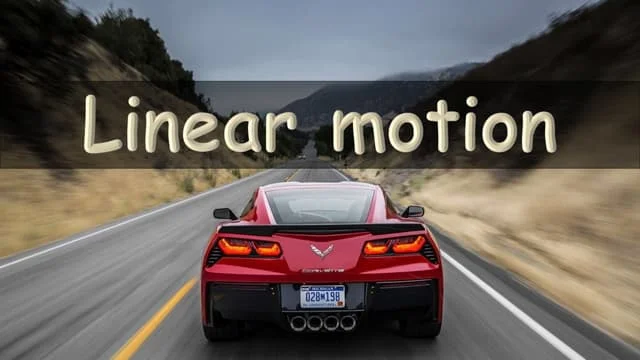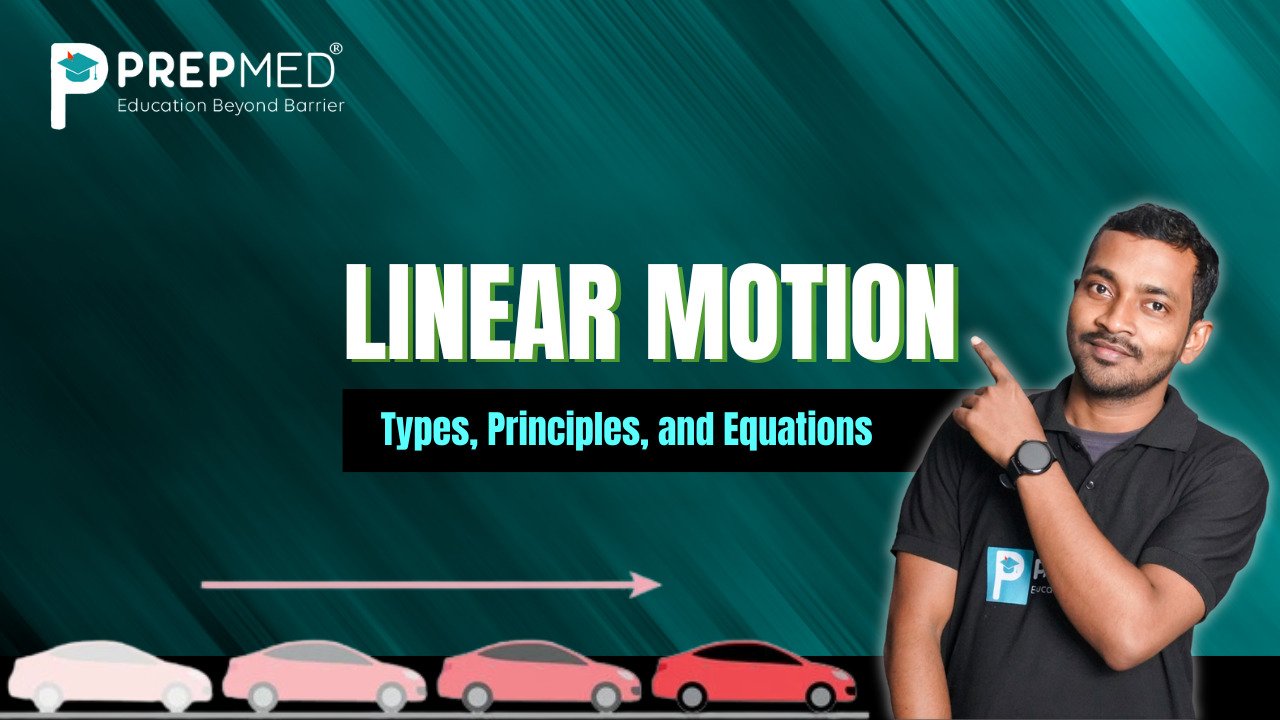December 30, 2024
Linear Motion: Types, Principles, and Equations
Linear motion is one of the basic motions in physics; it is the motion of an object moving along in a straight line. Understanding this linear motion is important as it serves as the reference in analyzing other motions and concepts in mechanics. Now, it is time to look at how linear motion works, what types can be distinguished, and some definitions and examples to clarify the concept.
Linear motion or also referred to as rectilinear motion is defined when an object moves along a straight path. It is described as the one that has both direction and magnitude of motion. Linear motion is quite easy to comprehend as all parts of the object travel the same distance in the same direction.
What do you understand by the term “Motion in a straight line?”
Whenever we discuss motion or rest, it is always talked with reference to a fixed point which is called the origin. Consequently, with regard to the change in the position, there are two quantities that can be taken in reference to describe any change in the position and they are distance and displacement. The distance can be described as the overall traveled path in the given motion.
It can be represented only by a magnitude and it can be equal to zero. Whereas, displacement is generally described as the shortest distance between the point of origin and the end point. It is a vector quantity and it has both magnitude and direction. Linear motion includes walking, running, etc., or any kind of straight movement.
Motion in a straight line also referred to as straight-line motion or rectilinear motion, is defined as the motion of an object when the object travels along a straight line. This type of motion is determined by having both the direction of its motion and its magnitude, conveying that the object is moving in a certain direction at a specific speed. In linear motion, all parts of an object move the same distance in the same direction making this kind of motion relatively easier to study.
What do you understand by motion?
Motion can be defined as the change in position of an object in a certain period of time. In other words, it can be defined as a process of changing position. For instance-Train moving, a fan, a round ball rolling, etc.
What are the different types of motion?
There are 3 different types of motion. They are-
- Linear Motion
- Oscillatory motion
- Rotary Motion
Rotatory Motion- This is a type of motion where the object moves around an axis. For example, a rotating fan.
Oscillatory Motion – In oscillatory motion, an object moves to and fro in the same manner repeatedly. For example, a pendulum.
Linear Motion – This is a motion that only moves in one direction and is usually known as movement along a straight line.For example, a bus moving along a straight path.
What are the types of linear motion?
Linear Motion is then divided into two types: uniform linear motion and non-uniform linear motion.
Uniform Linear Motion- Uniform linear motion is the one in which an object that is in motion covers a straight line and has a constant velocity. In other words, it is a type of linear motion where the object covers an equal distance in equal periods of time. This means that there is no change in the velocity of the object which has a linear motion in the direction of the velocity.
Example: An example of uniform linear motion is a motorbike moving at 40 km per hour along the straight road without changing the direction of its movement. The distance covered in an hour and the speed of the motorbike remains constant throughout the journey.
Non-uniform linear motion is defined as the motion in a straight line path where the velocity of the body is not constant. This means that the object undergoes changes in speed or velocity as it travels in a straight line. The velocity of the object is not constant as the object experiences acceleration or deceleration.
Example: A car moving along a straight line from rest to a speed of 80 km/hr can be an example of nonuniform motion in a straight line. Acceleration is depicted in this case as the speed of the car increases with time.

What do you know about the equations of linear motion?
The equations of linear motion are mathematical equations that are used in solving all kinds of problems connected with the motion of an object that follows a straight line. These equations are usually known as equations of motion that deal with displacement, velocity, acceleration, and time. The three primary equations of linear motion are:
v = u + at
where v is the final velocity, u is the initial velocity, a is the acceleration and t is the time.
s = ut + ½at²
Where s gives the displacement, u = initial velocity, a is the acceleration and time is t.
v² = u² + 2as
where final velocity is v, initial velocity is u, the Acceleration is a and s denotes the displacement.
FAQS:
1. What are the forms of linear motion?
Linear motion can be classified into two types: one is the uniform linear motion in which the velocity is constant and the other one is non-uniform linear motion in which the velocity is not constant.
2. What are the significant equations present in linear motion?
The main equations of linear motion are:
v = u + at.
v² = u² + 2as.
s = ut + ½at²
3. How displacement is different from distance?
Displacement is defined as the shortest distance between the starting position and the final position, whereas distance gives us the total length of the path travelled from the initial position to the final position.







